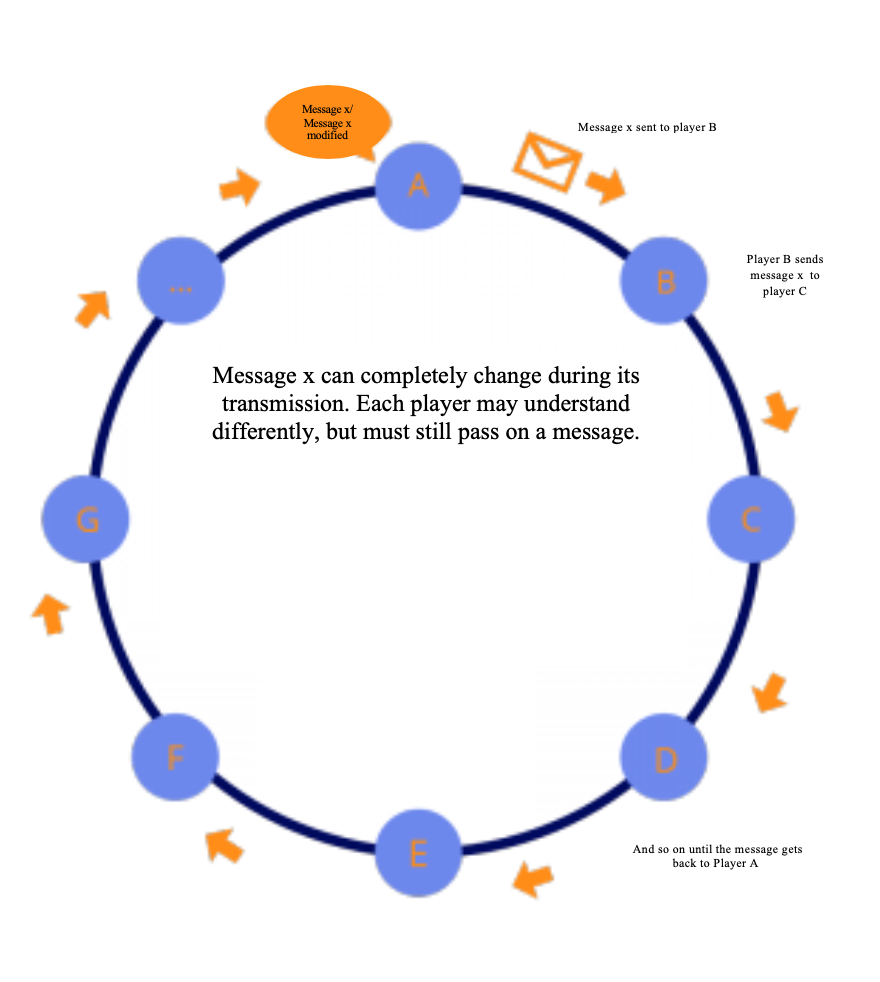This workshop consists of playing the famous “Telephone Game” which is a good way to explain how easily information can be modified when it circulates from one person to another.
General Objective
Preparation time for facilitator
Competence area
Time needed to complete activity (for learner)
Name of author
Resource originally created in
Introduction
The goal of the game is to understand to what extent communication can be distorted especially when passed on by word of mouth. This game has various names including ‘Pass it On’, ‘Rumours’, ‘Word of Mouth’ and ‘Telephone’. Here’s how it works:  Facilitation tip: This activity can be done independently of further context, but we recommend using it as introduction to workshops oriented towards fake news.
Facilitation tip: This activity can be done independently of further context, but we recommend using it as introduction to workshops oriented towards fake news.
Telephone
To start, players will have to form a line or circle. Ask next that each person thinks of a sentence – these could include names of celebrities they like, characters from video games, anime etc. Leave a few minutes for them to think of things before moving on.
How to Play:
- Choose a participant at random to be the first to whisper their sentence into the ear of their left-hand neighbour.
- The next person will now repeat this to the person to their left. They must try to repeat exactly what they heard.
The turn ends when all participants have heard and passed on the message. The first player at this point says the message out loud that they had whispered before, which may have changed during its journey. Depending on time, there should be as many rounds as there are participants. Players could also write their sentences down before at the beginning of the game to compare them with the final versions.
Facilitation tips: To make it more likely the message will be distorted, start the game with sentences containing alliteration:
- A guppy’s in a shark tank
- Candy crunches coconut lovers
- Red roses wilt with thorny stems
- Door knobs and doorjambs have hasps and hinges
Discussion
Now ask the following questions aiming to lead group members to an understanding of the ways in which communication can be distorted:
- How could we make sure the original message is preserved? Do you need to communicate it orally? (Response: [common theme of discussion] we could for example write it down and pass it around)
- Were people really misunderstanding or deliberately changing it (without implying that this was not a good thing to do – this is also part of the game)
- When we write something down and ask, say player A to give it to player B, will the message change (Response: [common theme]: No)
- What’s the difference between a text sent to a friend and a post written on a Facebook timeline which is then linked on Twitter? (Response: [common theme] the text is only accessible on the device it was sent to, whereas the Facebook/Twitter post can be seen by all the poster’s friends.)
Conclusion
Emphasise the idea that information repeated orally is rarely reliable. ‘I heard from my cousin who heard it from her brother who heard it from a friend of the principal that the school will close next week’. Clearly this is less reliable than ‘the principal said the school will close next week’, this being much easier to verify.
Also, if you write a message on social media, it can be sent on by friends and can circulate in a ‘private’ circle. However, if I have not changed the privacy settings of my post so it is only visible by friends, it can become ‘public’. This can mean that all users of whatever social media platform you are using can see your post.
So, if you share unreliable information in ‘public’, you are just passing on a message. Other users will be able to interpret it and pass it on in a broader context (sharing, retweeting, etc.) In the case of unreliable information, helping its distribution will allow it to be interpreted in multiple ways. The message then gets a wider audience and the unreliable source can use this to gain visibility. You have therefore promoted it unknowingly.
Such questions now come up: How can we preserve a reliable message online or when the senders are not necessarily in direct contact with the information source? How do we know if information is reliable, viable or not? At what point does it become important to spend time verifying its source while information is constantly circulating?